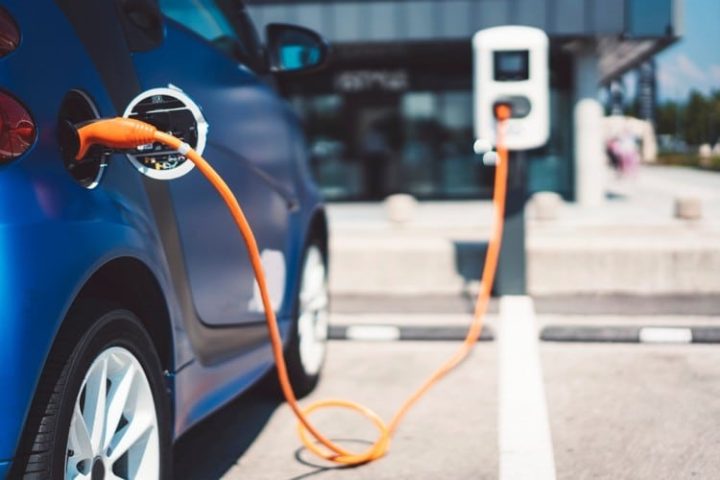
It was seven years ago that former electric-car engineer Ozzie Zehner wrote “Unclean at Any Speed,” warning that, environmentally speaking, plug-in vehicles were more scam than savior. Now a third-generation automobile dealer who has driven electric cars illustrates how they’re also expensive and unrealistic.
That is, “fast charge” electric power is not only up to 62-percent more costly per mile than gasoline, but powering up is not even all that fast: It takes an hour or more.
This can equate to waiting hundreds of hours annually for your vehicle to charge while on the road.
Writing at Real Clear Energy, Geoffrey Pohanka points out that with electric cars gaining currency — and with politicians talking about banning gas autos entirely — and his being in the auto business, he wants to prepare for tomorrow’s market realities. “I want to sell what people want to buy,” he writes. So he has “driven the Volkswagen Golf EV, the Honda Clarity plug-in (PEV), and now the Hyundai Kona EV.”
All these vehicles rival their gas counterparts in terms of road characteristics and performance, Pohanka says. But it’s how they’re powered that makes the difference.
Pohanka certainly appears dedicated: He installed a “Level II” charger at home at a cost of $850. This can get even more expensive if, unlike him, your fuse box isn’t in your garage and significant extra wiring is required.
Pohanka provides intricate detail, but the bottom line is that charging a Kona takes 10 hours at his home; its range is 250 miles. This is fine for normal driving, but what happens if you must take a long road trip and rely on public charging stations?
“Tesla has a robust, nationwide rapid-charging infrastructure, but Tesla uses a proprietary charging plug that does not work with other makes of vehicles,” the dealer explains. “Volkswagen, as part of its diesel settlement, has constructed a large charging network under the name of Electrify America. Electrify America has the closest rapid chargers to both my home and my office.”
While the charging time varies, it’s no gas station, five-minute fill-up. As Pohanka writes:
Fast chargers will bring the battery only to an 80% total charge due to the limitations of lithium batteries. Charging above 80% will damage the battery. Since I arrived at the charging station with ten percent capacity remaining, I received an additional 70% charge, which gave me about 190 miles total range. It required one hour and ten minutes. The cost was $21.07, or 43 cents per kW. The cost would be about 34 cents per kW if I joined Electrify America for four dollars per month. Filling my gasoline vehicle for the same range would cost less — about $13. Charging an EV at a fast charger costs more per mile of range than filling up a gasoline-powered vehicle.
Pohanka pondered what he’d do if he had to rely on public charging stations, likely a reality for people living in town houses or apartments. With his 80-mile-daily regular driving, he’d have to charge up every other day.
“I would have to spend over 200 hours annually charging my vehicle — the equivalent of 25 eight-hour working days,” he informs. “And this assumes that I never had to wait in line for another vehicle to finish charging and that the charging station was nearby when I needed one.” Moreover, his vehicle would have only the aforementioned 190-mile range.
It gets worse, too. Using a different charging station, one closer to Pohanka’s office, would burn up “300 hours every year,” he reveals, “equal to 37 eight-hour work days annually.” What would such inefficiency do to worker productivity?
Yet there’s more. Pohanka further tells us that questions
also arise about how many chargers would be needed to keep cars like mine on the road. One electrical cord could charge only about 20 cars each day (80 miles per day driving and 170 miles available driving range). Perhaps a more realistic capacity would be 12 cars a day, since it is doubtful many would be doing this in odd hours. Ten thousand cars like mine would require 416 charging cords (or 208 towers with two cords each). It would require only about 14 gasoline hoses (or seven towers) to fuel the same number of gasoline-powered vehicles at 50% capacity. One hundred thousand EVs would require over 4,000 available charging cords.
The other drawback to EVs is their higher cost. The MSRP of the 2021 Hyundai Kona Ultimate I have been charging is $46,985. The same model powered by gasoline has an MSRP of $31,370, or over $15,000 less.
The kicker is that EVs aren’t even as environment-friendly as billed. Pohanka mentions that they “start their lives with a larger carbon footprint than gasoline vehicles,” with 50,000 pounds of ore — only obtained by moving 500,000 pounds of overburden — needed to create one 1,000-pound battery.
Pohanka also states that the rare-earth minerals needed for the batteries largely originate abroad, with China being home to 80 percent of battery manufacturing. (So our Beijing-bought politicians may have another reason to love EVs.)
Agreeing with Pohanka’s environmental assessment is the aforementioned Ozzie Zehner. A former plug-in advocate and General Motors engineer who once built his own hybrid car, he was convinced EVs “would help reduce both pollution and fossil-fuel dependence,” he wrote in 2013. But he finally had to admit:
“I was wrong.”
Electricity, of course, is generated by way of other energy sources. “Natural gas requires burning, it produces CO2, and it often demands environmentally problematic methods to release it from the ground,” Zehner explained. “Nuclear power yields hard-to-store wastes as well as proliferation and fallout risks.”
“There’s no clear-cut way to compare those impacts,” he continues. “Focusing only on greenhouse gases, however important, misses much of the picture.”
Zehner goes on to discuss “the environmental impacts over the [electric] vehicle’s entire life cycle, from its construction through its operation and on to its eventual retirement at the junkyard.” His whole analysis is worth reading, as is Pohanka’s.
Yet there’s also something unmentioned. California has, unsurprisingly, led the EV charge; its politicians have even instituted a ban on new gas cars’ sale that takes effect in 2035. Yet the state already endures rolling blackouts resulting from a strained electric grid, owing to its leaders’ environmentalist-driven refusal to build new power plants.
So what’s going to happen to that grid when everyone is driving an electric car?
You can’t even charge an EV in an hour when there’s no power.
So it’s ironic: Environmental paranoia is facilitating EVs mainstreaming even as it makes them ever more impractical. That’s the “genius” of big government for you.
The market, do note, doesn’t make these bush-league mistakes.



